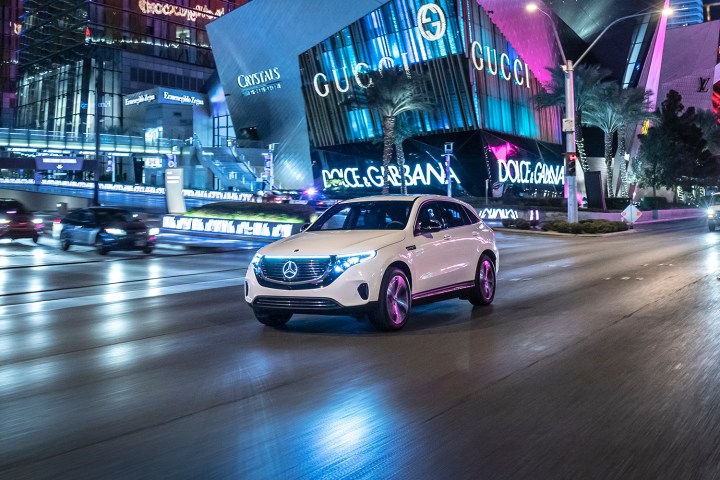
Concept cars like the Mercedes-Benz EQ Silver Arrow shed fascinating insight into the future of an automaker, and they give us a glimpse at what’s going on inside the minds of the people who design them. Eager to learn more, Digital Trends sat down with Gorden Wagener, the head of design for Mercedes-Benz, to talk about the second-generation CLA, and to learn how technologies like electrification and autonomy will shape the company’s upcoming all-stars.
The original CLA introduced in 2013 proudly stood out as one of the most design-led models in Mercedes’ history. Was it difficult to create a follow-up?
Gorden Wagener: First of all, it’s great fun to design a CLA. It’s a designer’s car; it looks like a designer’s sketch. The new car is very close to the sketch. That’s the essence of the design process, to capture the feeling of the original sketch in every project.
The car is on a new platform, and it has grown up quite a bit. It’s like a human beauty idol, and it’s sexier than ever. This is something that we as humans typically like. It brings the CLA into a completely new generation. On the other hand, the cleanness of the design is, of course, very high-tech.

Looking ahead, where do you want to take Mercedes’ design language?
I will not throw Sensual Purity overboard. It’s very important for a luxury brand to have a significant style. We were the first ones inventing that clean, timeless design language.
“It’s very important for a luxury brand to have a significant style.”
We are a luxury company. We used to be a traditional luxury company, the brand of the fathers but not the children, now we have transformed ourselves into a modern luxury company through design. Why would I change this identity? I will not change the general idea and the philosophy behind it, but of course I have to be able to develop that further and further. We are seeing Sensual Purity 1.0, 1.5, etc.; it’s like an operating system. The next S-Class will be 3.0. We will push it further, but we will not do something like a 90-degree turn tomorrow, because that would be wrong.
Speaking of evolving a design language, the battery-electric EQC unveiled in 2018 looks more conventional than rivals like the Jaguar I-Pace. Was this intentional?
We started consciously in the GLC segment, which is our hottest-selling segment. People like SUVs, and they like that segment. There is a lot of volume in this segment, so it was a no-brainer to start like this.
Do you see electrification and autonomy creating new design possibilities?
Plenty. It’s such an exciting time. We are changing the car more in the next 10 years than we ever have before, so it’s cool to be in the driver’s seat as it all happens.
Autonomy enables more on-board entertainment and infotainment technology, and so the car will transform through that. Not tomorrow but gradually. Everyone is talking about autonomy like, “ok, tomorrow we all drive autonomous.” No, it’s not going to happen like this. It will be a gradual process. It will take some time.
“The mainstream segment is at risk of becoming a public tram. And we don’t want to build trams.”
The meaning of the car will change. We have to make sure it doesn’t change too much. In the end, the car is still fun to drive, but we will see different role models through the tech. We will see the autonomous part, commuting, in a metropolitan environment. It’s a great solution there. But does everyone want to share? I don’t think so. For rich people, safety and security matter.
Lots of people want privacy, security, and so on. They love having their own thing that can be driven autonomously but also manually. I see a big difference between the luxury segment and the mainstream segment. That is at risk of becoming a public tram. And we don’t want to build trams. We will always make sure to stay on the luxury side of things.
Editors' Recommendations
- Mercedes-Benz EQG: range, price, release date, and more
- Mercedes-Benz brings ChatGPT voice control to its cars
- Study: Motorists using Apple CarPlay are more distracted than drunk drivers
- Mercedes-Benz wants to know what you expect from a ride in a self-driving car
- Mercedes-Benz’s electric EQC is one of the most affordable cars in its segment






